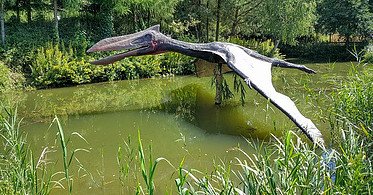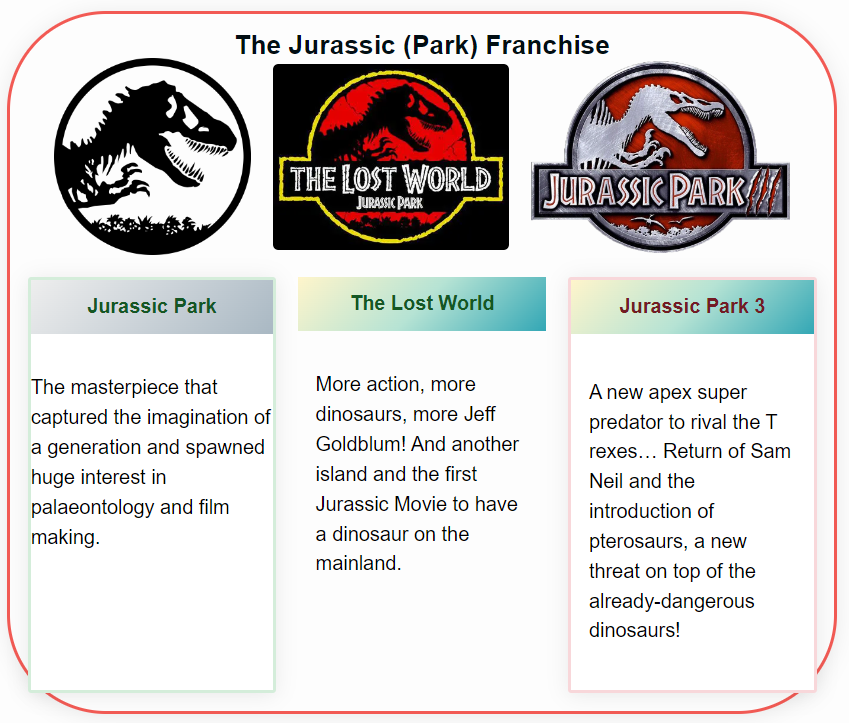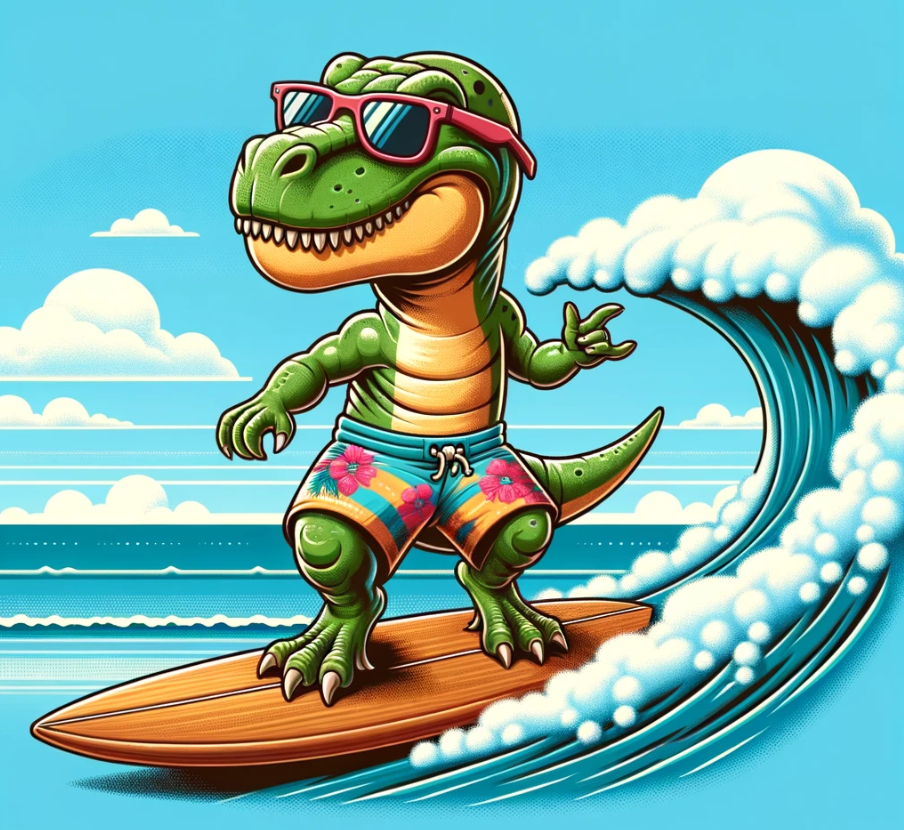
Pterosaurs, also known as pterodactyls, were a group of prehistoric flying reptiles that lived during the Mesozoic Era. These fascinating creatures were the first vertebrates to evolve powered flight, and their fossils have captured the imagination of people for centuries.
Evolution and Extinction of Pterosaurs
Pterosaurs first appeared in the Late Triassic Period, around 220 million years ago. Over the course of the next 80 million years, they diversified into a wide range of species and inhabited various environments across the globe.
The exact cause of the extinction of pterosaurs remains unknown, but it is widely believed that it was due to a combination of factors, including climate change and competition from birds. Pterosaurs went extinct along with the dinosaurs at the end of the Cretaceous Period, around 65 million years ago.
Where did Pterosaurs Live?
Pterosaurs were widely distributed across the world, from what is now South America to Europe, Africa, and Asia. They lived in a range of environments, from coastal regions to inland deserts and forests.
Their fossil remains have been found in a variety of rock formations, including sandstone, limestone, and shale. This evidence suggests that they were highly adaptable and able to survive in different types of habitats.
Pterosaur Anatomy
Pterosaurs had a number of unique physical features that allowed them to fly. They had elongated fourth fingers on each hand, which supported a flap of skin called a “pteroid bone.” This bone, along with the elongated fingers, created a surface area for the attachment of flight muscles.
In addition, pterosaurs had large, lightweight skulls, and a system of air sacs throughout their bodies that helped to reduce their weight and increase their lung capacity. This anatomy, combined with their strong leg and wing muscles, allowed them to fly with ease.
Compared to birds, pterosaurs had different flight adaptations, including a keel-less sternum and a different arrangement of flight muscles. These differences highlight the distinct evolution of flight in these two groups of flying vertebrates.
Types of Pterosaurs
Pterosaurs are divided into two main groups: pterodactyloids and rhamphorhynchoids. Pterodactyloids were the more advanced group and included the largest pterosaurs, such as Pteranodon and Quetzalcoatlus. They had shorter, deeper skulls and longer, more robust hind limbs.
Rhamphorhynchoids, on the other hand, were smaller and more primitive. They had longer, more pointed snouts and longer tails, which they used for balance and control during flight.
Famous Fossils of Pterosaurs
Pterosaurs have left behind a number of well-known fossils, which have provided important insights into their anatomy and behavior. Some of the most famous include:
Pterodaustro
This species was discovered in Argentina and is known for its long, thin beak and rows of teeth. It is believed to have fed on small aquatic creatures by filtering water through its beak.
Quetzalcoatlus
This giant pterodactyl was one of the ancient flying reptiles that ever lived, with a wingspan of over 30 feet. Its fossils have been found in Texas and Mexico.
Pteranodon
This species was one of the pterodactyl dinosaurs and is known for its long, toothless beak and large cranial crest. Its fossils have been found in North America, particularly in the western United States.
Here is a list of most of the Pterosaur species discovered so far:
- A
- Aerodactylus
- Aerotitan
- Ahnighicanax
- Anhanguera
- Anurognathus
- Archaeopteryx
- Azhdarcho
- B
- Beipiaopterus
- Boreopterus
- Brasileodactylus
- C
- Cachalopterus
- Campylognathoides
- Cearadactylus
- Changyuraptor
- Chaoyangopterus
- Coloborhynchus
- Compsognathus
- Ctenochasma
- D
- Darwinopterus
- Dimorphodon
- Dorygnathus
- Eudimorphodon
- Eopterus
- Eudimorphodon ranzii
- F
- Feilongus
- Flabellicosta
- Hatzegopteryx
- G
- Germanodactylus
- Gnathosaurus
- H
- Haopterus
- Jeholopterus
- Jeholornis
- Istiodactylus
- K
- Kunpengopterus
- L
- Lonchodectes
- Longchengopterus
- Longisquama
- Ludodactylus
- M
- Magyarosaurus
- Marginocephala
- Mesadactylus
- Microraptor
- Mimodactylus
- Nemicolopterus
- Nyctosaurus
- O
- Ornithocheirus
- Ornithodesmus
- Ornitholestes
- Ornithosuchus
- P
- Palaeornis
- Parapsicephalus
- Patagiorhamphus
- Peteinosaurus
- Pterodactylus
- Pterodaustro
- Pterodaustro guinazui
- Pterodaustro leali
- Pterodaustro spenceri
- Pterodaustro tschopauensis
- Pterodaustro wielandi
- Pterodactylus antiquus
- Rhamphorhynchus
- Rhamphostomus
- Rioarribasaurus
- S
- Santanadactylus
- Scaphognathus
- Shenzhoupterus
- Shuvuuia
- Solnhofensia
- T
- Tapejara
- Thalassodromeus
- Thapunngaka
- Tupuxuara
- U
- Undescribed specimen from Mongolia
- V
- Vectiraptor
- W
- Wiedenhopfferia
- X
- Xingyiopterus
- Y
- Yangchuanopterus
- Z
- Zhejiangopterus
This list may not cover all known species due to new discoveries and possible reclassification of older fossils, but we do our best to keep up to date!

